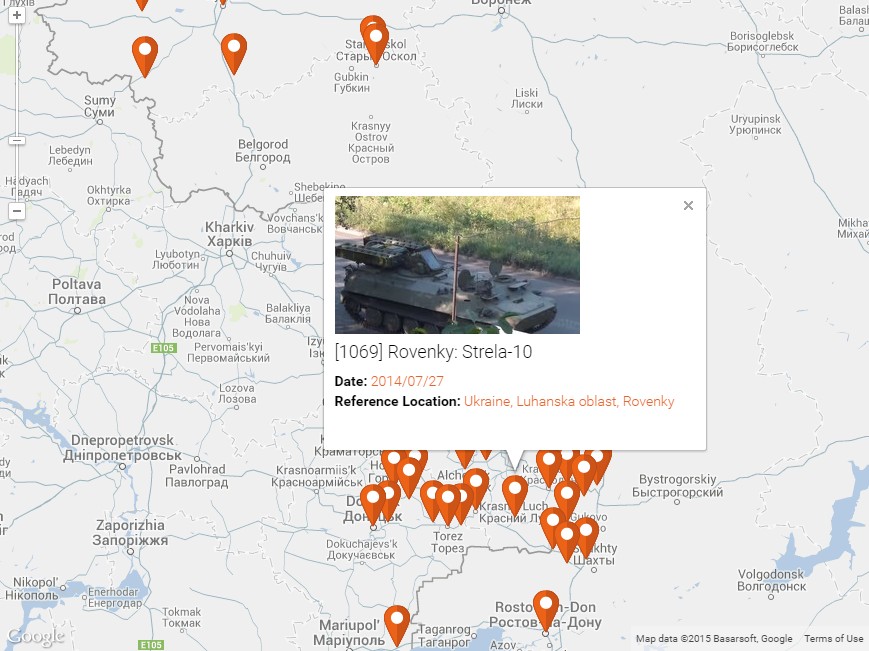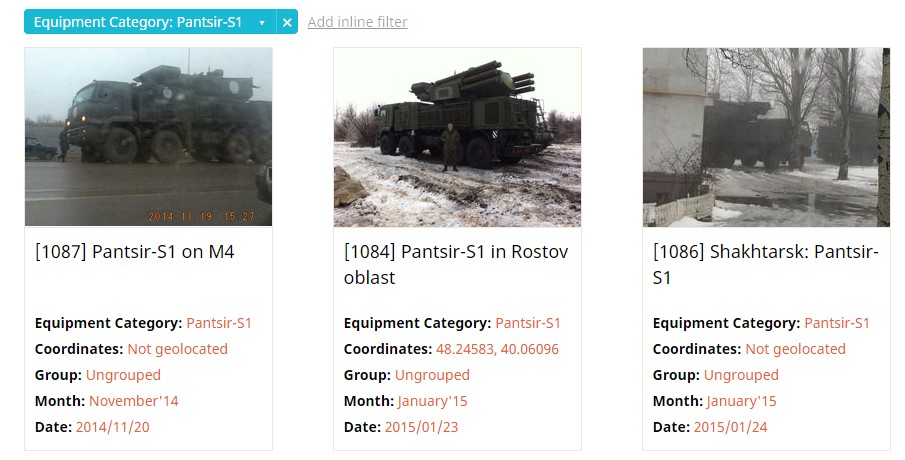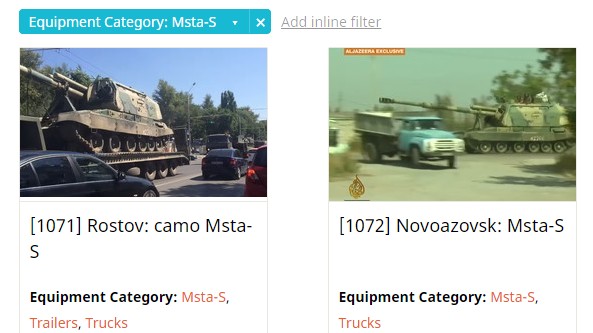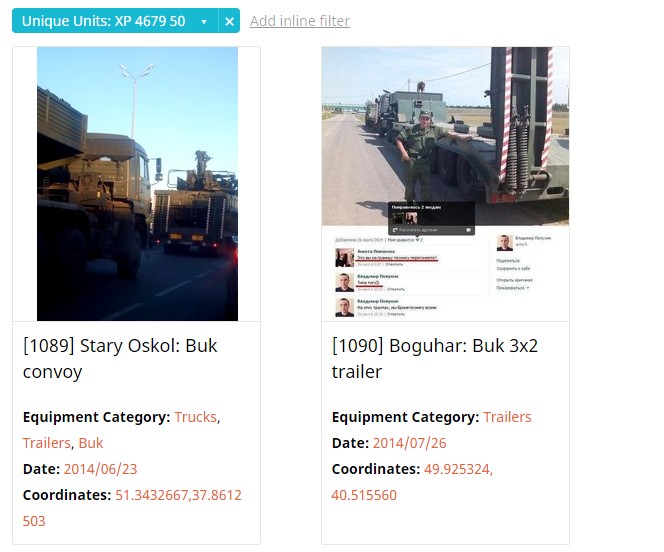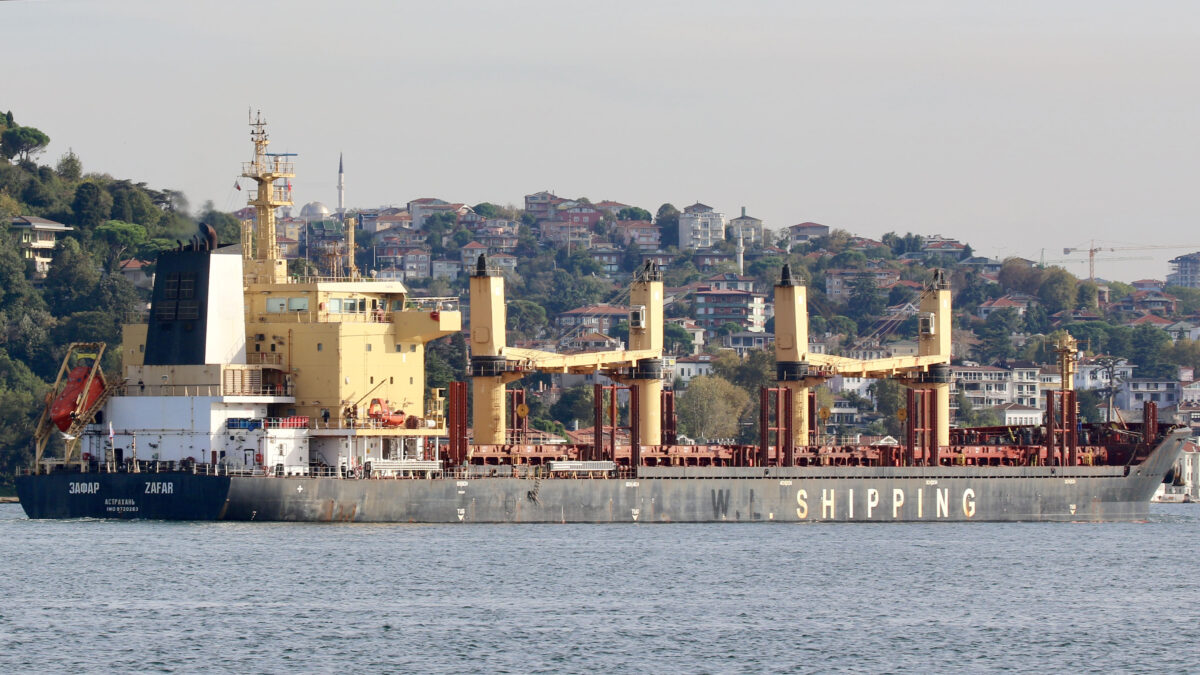Bellingcat Launches the Ukraine Conflict Vehicle Tracking Project
Over the past few months, the Bellingcat team has been working on something slightly different from our previously published work. Now, we’re pleased to launch a crowdsourced effort to track the movements of military vehicles both inside and in the vicinity of Ukraine, primarily to determine if equipment has been transferred across the border from Russia to Ukraine.
To kick-start the effort, we have used Daniel Romein’s original research of last summer’s military movements to build an initial data set for launch, supplemented with additional interesting sightings collected by the Bellingcat team through social media. The data is made available through Silk, a beautiful data publishing and visualization platform.
You can access the Bellingcat Ukraine conflict vehicle tracking Silk here: http://bellingcat-vehicles.silk.co/
Why are we doing this? We do not want to simply report a list of cases when we think Russian vehicles have crossed the border to Ukraine, but want to provide the active community of social media investigators a platform to do their own research, as well as allow the community to contribute to the data set with their findings through Checkdesk. The Bellingcat team will maintain the data in Silk, and continuously make updates based on the verified submissions. As we consider the current data set ‘Beta quality’, we also welcome corrections to the initial data set via Checkdesk, should you find any errors.
Our hope is to build a large data set that can be mined to make entirely new discoveries. Some sightings of vehicles may not be so interesting on their own, but in a sequence raise new questions. As an example, a group of vehicles was seen travelling towards Russia’s Donetsk on June 21st, and similar vehicles were seen travelling through Ukraine’s Krasnodon later on the same day. Could these be the same vehicles after crossing the border?
In Silk, there are three collections of data:
- Sightings, which provide links to whatever media is available of the event, as well as additional details like data, location, a breakdown of types of equipment seen. In some cases, a sighting can be elaborated down to the uniquely identifiable vehicles. Sightings can also be grouped, so if for instance the same convoy is seen in multiple YouTube videos, these sightings can be grouped together. Link to a filterable list of all sightings.
- Equipment Categories, which are basically ‘buckets’ for categorizating the various types of equipment seen in the video. The category list also doubles as a handy reference to different vehicle types. Link to equipment category list.
- Unique Units, listing individually identifiable units, e.g. based on the license plate or other identifiers. Link to list of uniquely identifiable units.
The data can be visualized and explored in many different ways, so we encourage you do dig in and experiment with e.g. the different mapping options the tool provides!
As for the ready made views, below is a screen shot of the filterable equipment sighting list. Through thisview, it’s possible to for instance look up all Pantsir-S1 sightings in the data set, or all sightings from a given month.
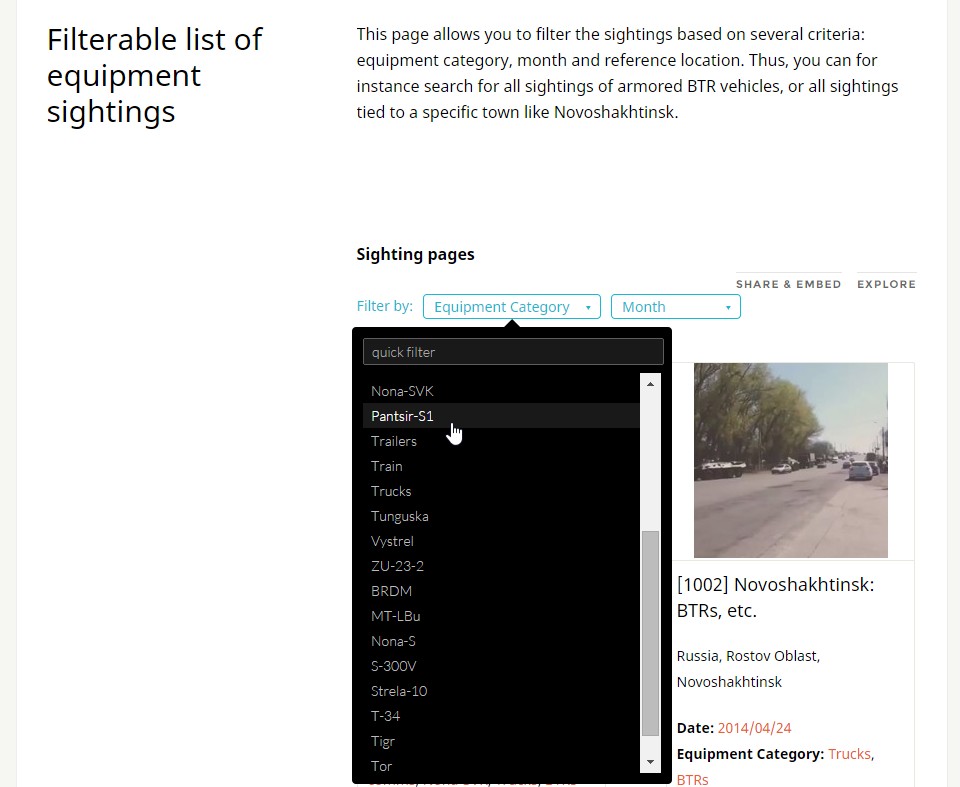
Another powerful tool is the search. This is very useful for e.g. looking up if certain military license plates are recorded in the database.

Findings to date
So, what can be found in the data set already today? Let’s have a look.
Around Luhansk, there have been several sightings of Dozor-N armoured vehicles, which are unique to Russia.
East of Donetsk, Pantsir-S1 sightings were reported in late January. This is also a weapon system used only by Russia. Interestingly, there were also several reports through social media of Pantsir-S1 sightings near the Ukranian border not long before this.
Msta-S self-propelled howitzers were filmed travelling on trailers through Rostov in July. In early September, an Msta-S was filmed driving through the town of Novoazovsk, and the unit’s unique markings seem to match exactly to one of the units that were seen passing through Rostov. Again, seems that the units crossed the border from Russia to Ukraine.
Finally, a picture of a Kamaz truck’s trailer in Boguchar was noted on social media, as it was linked to transporting tanks to the Ukranian border. However, cross-referencing the license plate to other trailers in our data set reveals something very interesting: this same trailer was in June transporting the Buk TELAR unit which is linked with the downing of MH17.
So, starting with these kinds of findings, we can’t wait to see what the community can do with this data and platform.
Submitting data through Checkdesk
Checkdesk is a platform that allows users to collaborate on the verification of reports, videos, photographs, and other information. Bellingcat hopes that Checkdesk will be used to bring together a lot of the information already shared and discussed on Russian vehicles in Ukraine, and enable the information to be reviewed and verified openly. We also hope that by making the process as open as possible we encourage our readers to participate in the discovery and verification process, giving them the opportunity to learn about verification and giving those who already have experience verifying content chance to share their knowledge.
Using Checkdesk couldn’t be simpler. A Checkdesk story (example here) is made up of updates, and each update is generally based around verifying individual elements of a story, be it an image or a claim made about the story. Anyone can add verification footnotes to an update, and once “journalists” (site moderators) decide the update is verified or not they can update the status to False, Verified, Undetermined, In Progress, or Not Applicable (example here).
It’s also possible to embed updates into web pages with a simple script:
As part of the current project we ask users to submit all sightings and reports of vehicles in Ukraine to the following updates, and the Bellingcat team will then review and organise the submissions for verification and adding to the database.
- New sightings
- Geolocation updates
- Equipment identification reports
- Error reports (e.g. wrong images or descriptions in sightings)
The Bellingcat team also encourages the preservation of content, especially as material is frequently deleted on social media sites once its discovery has been made public. Videos can be downloaded by a variety of websites, and Archive.org allows many pages to archived.
The following are guides and other resources on verification:
Tools
Google Earth Pro – Now free.
Clip Converter – Video saving site.
Keepvid – Video saving site.
Tube Offline – Video saving site for videos from VK.com.
Archive.org – Site for archiving web pages.
VLC Media Player – A free and light weight media player with various useful tools and options.
Paint.Net – Free digital photo editing software.
Guides
A Beginner’s Guide to Geolocating Videos
Verification and Geolocation Tricks and Tips with Google Earth
Geolocation Techniques – Mapping Landmarks
Open Source Information in Conflict Zones
